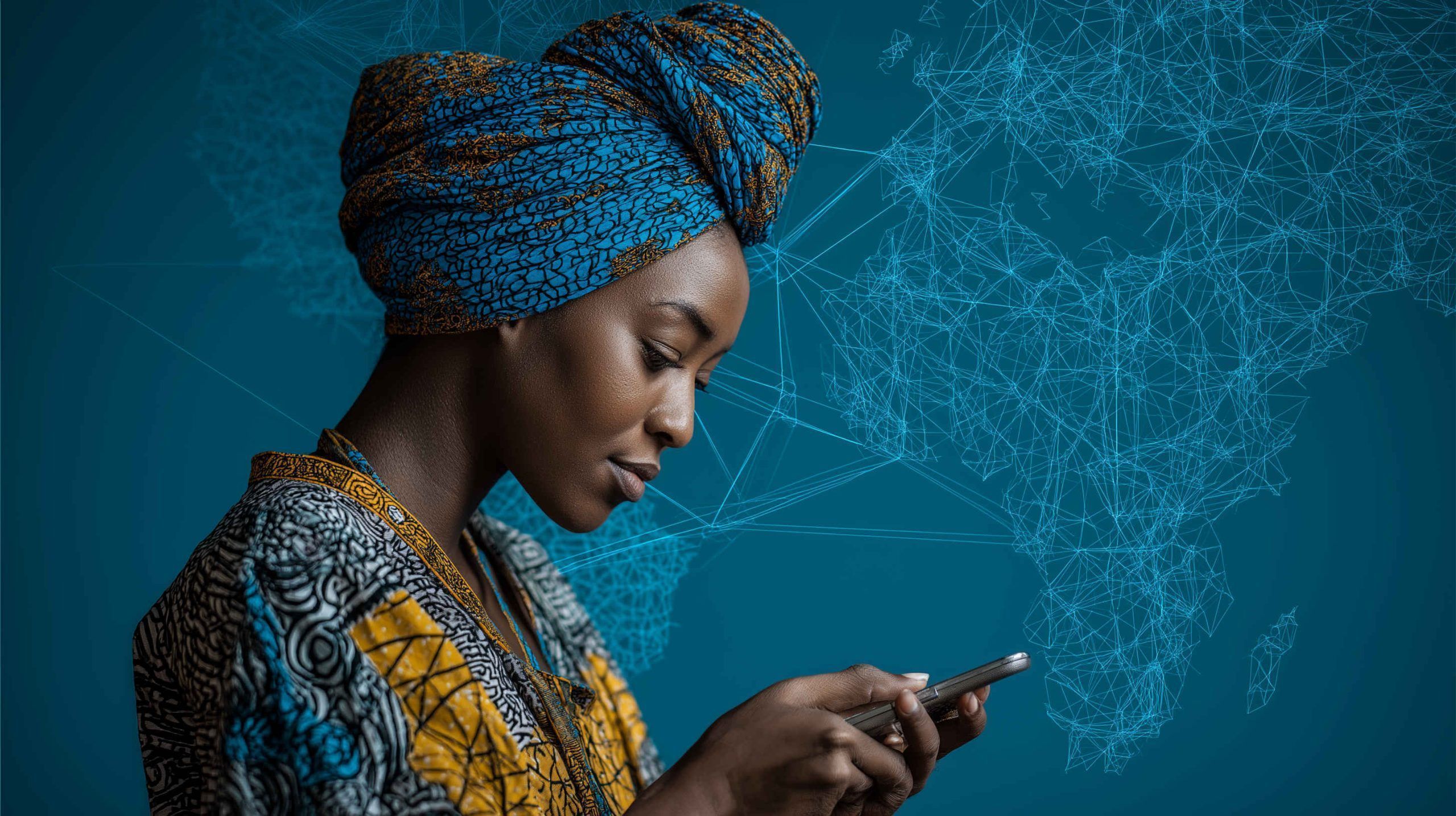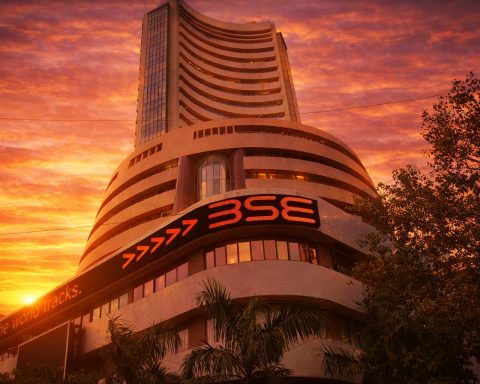- Telkom/Openserve is phasing out copper as fixed broadband shifts to fiber, with end-2024 ADSL subscribers under 36,000, down from a peak of over 1 million in 2015.
- FTTH subscriptions rose from 1.49 million in 2023 to 2.47 million in 2024, driven by aggressive rollouts from Telkom/Openserve, Vumatel, and other operators.
- Over 69% of internet users in SA go online via mobile devices, while about 13% of households have fixed-line home internet as of 2024.
- SA Connect Phase 2 (2023–2026) targets connecting over 5.5 million rural households by 2026 and includes 32,000 Wi‑Fi hotspots, 18,000 schools, 5,700 clinics and 8,200 tribal centers.
- In March 2022 ICASA held an auction of 700 MHz, 2.6 GHz, and 3.5 GHz spectrum that unlocked rapid 5G rollouts by Vodacom and MTN.
- Starlink’s SA entry remained blocked by licensing rules as of mid-2025, with a May 2025 draft policy proposing equity‑equivalent investment to satisfy empowerment rules.
- Rain’s fixed-wireless 5G offers start at R649 per month for 30 Mbps and R1,095 for uncapped speeds, with 700 MHz expansion planned to reach more rural areas by 2025.
- Vodacom’s 5G coverage reached about 52% of the population by early 2025, while MTN was around 45% by mid-2025, with both expanding rapidly in urban and peri-urban areas.
- SA Connect pricing includes unlimited options around R249 per month on subsidized networks or about R5 per GB, aiming to boost affordability.
- telecoms invested in resilience during load shedding, spending over R3.5 billion on backup power in 2023 and about R385 million in 2024 as outages eased, with cable theft costing at least R283 million in 2024.
From Slow Dial-Up to a Fiber and 5G Boom
South Africa’s internet infrastructure has transformed dramatically over the past decade, moving from copper phone lines to lightning-fast fiber optics and 5G wireless. Fixed-line broadband is now dominated by fiber, as old ADSL (DSL over copper) connections vanish. Telkom – the former monopoly – had over 1 million ADSL subscribers at its peak around 2015, but by the end of 2024 fewer than 36,000 remained on copper lines [1] [2]. This 96% collapse in DSL usage reflects customers migrating to fiber and wireless broadband. Fiber-to-the-home (FTTH) subscriptions surged from 1.49 million in 2023 to 2.47 million in 2024 [3] – a jump driven by aggressive rollouts from Telkom’s Openserve, Vumatel, and other fiber network operators. Major cities now enjoy extensive fiber coverage, delivering high-speed, uncapped internet to homes and businesses.
Meanwhile, mobile internet reigns supreme for most South Africans. Over 69% of internet users go online via mobile devices, whereas only about 13% of households have a fixed-line home internet connection [4]. All four mobile network operators (Vodacom, MTN, Telkom Mobile, and Cell C) provide extensive 3G/4G coverage – reaching 99% of the population for 3G and 4G LTE [5]. Mobile broadband is often the only option in townships and rural areas where laying fiber is costly. Public Wi-Fi initiatives also help fill gaps: government programs like SA Connect have installed thousands of community Wi-Fi hotspots at schools, libraries, clinics, and public areas to bring affordable internet to underserved communities [6] [7]. In major metros, city governments launched free Wi-Fi projects (e.g. Tshwane’s “Project Isizwe” and Cape Town’s public Wi-Fi) allowing users a daily quota of free data. These efforts underscore a broad shift toward wireless connectivity, making internet access more ubiquitous than ever – South Africa’s internet penetration hit about 75% of the population by early 2024 [8] [9].
The Urban–Rural Digital Divide: Two Worlds Online
Despite overall progress, where you live in South Africa largely determines your internet experience. Urban areas enjoy far better connectivity than rural regions. In cities like Johannesburg, Cape Town, and Durban, high-speed options abound – fiber passes many suburbs, 4G is universal, and 5G signals are increasingly common. By contrast, many rural towns and villages rely on basic 3G or even 2G connections, and some remote areas have no coverage at all [10]. This has created a stark urban–rural internet gap. Across Africa, about 57% of city dwellers were online in 2024 versus only 23% of rural residents [11] [12]. South Africa mirrors this trend: while nearly 75% of households nationally have some internet access [13] [14], rural household access lags far behind urban centers. Rural users also tend to experience lower speeds – often stuck on 3G or satellite – compared to urban users who can get fiber or 4G/5G.
Infrastructure deployment heavily favors cities. Private telecom companies concentrate fiber and 5G investments where population density and incomes are highest (the Gauteng province alone, home to Joburg and Pretoria, has ~25% of the population and top broadband coverage). Rural rollout has been slower due to high costs and lower returns. To bridge this divide, the government’s SA Connect program (Phase 2 launched in late 2023) aims to connect over 5.5 million rural households by 2026 via subsidized fiber backhaul and Wi-Fi hotspots [15] [16]. Likewise, mobile operators use low-band spectrum (like 700 MHz 4G/5G) to cover wider rural areas; for instance, Rain and Vodacom have begun deploying 4G/5G on 700 MHz to reach farms and small towns [17] [18]. The digital divide is slowly narrowing – census data shows the share of South African households with no internet access dropped from 64.8% in 2011 to 21.1% in 2022 [19] [20] – but a substantial connectivity gap between urban and rural communities persists in 2025.
Affordability and Speed: How Fast and How Expensive Is South African Internet?
Internet speeds in South Africa have climbed steadily, and costs (per unit of data or speed) have generally fallen, but affordability remains a concern for many. At the start of 2024, the median mobile network speed was ~50 Mbps download (up 35% year-on-year) and median fixed broadband speed ~46 Mbps (up ~14%) [21] [22]. On 5G connections, users can get hundreds of Mbps – a speed test on Rain’s new 5G router hit 401 Mbps download [23]. Fiber-to-the-home packages commonly offer 25–100 Mbps for home users, with premium plans up to 1 Gbps in major metros. These speeds are a far cry from a decade ago when 4 Mbps ADSL was standard.
Internet data prices, however, are high relative to incomes for the poorest South Africans. Mobile data in South Africa is cheaper than in many other African countries but still costs more (in absolute terms) than in developed countries. As of 2024, an entry-level mobile data/voice bundle cost about 0.7–0.9% of monthly gross national income per capita (meeting global affordability benchmarks), while a basic fixed broadband plan (5 GB usage) was around 3.3% of per-capita GNI [24]. In practical terms, 1 GB of mobile data can cost around R85 (∼$5) on prepaid, though larger bundles bring the per-GB price down. For example, 20 GB mobile data packages sell for roughly R299 ($16) on major networks. Fiber and 5G “uncapped” home internet is comparatively a better value: many ISPs offer unlimited fiber at 10 Mbps for ~R400 ($22) and 50–100 Mbps for R600–R800 ($33–44) monthly. Rain’s fixed-wireless 5G plans are aggressively priced: their baseline unlimited 5G package costs about R649 per month (with speeds up to 30 Mbps), while a premium Rain 5G plan at R1,095 offers uncapped maximum speeds and even includes free mobile calls and data for two phones [25] [26]. Such plans significantly undercut traditional fiber in areas where Rain’s network is available.
Despite these options, many low-income South Africans still find internet access pricey. The vast majority of users rely on prepaid mobile data and must carefully ration usage. To address this, in 2020 the Competition Commission pushed operators to cut data prices (“#DataMustFall”). Vodacom and MTN responded by reducing tariffs and giving free daily data to poorer users. By 2025, mobile data prices per GB have dropped further, and zero-rated services (free access to certain sites) are offered, but the affordability gap remains – those in poverty struggle to afford a substantial data bundle each month. Government initiatives like SA Connect’s public Wi-Fi aim to provide ultra-low-cost access (as low as R5 per gigabyte and R249 per month for uncapped service on subsidized networks) [27]. Libraries and community centers also offer free Wi-Fi. Still, in poorer rural and township households, even a smartphone with data can be a luxury. The good news is internet value is improving: South Africa’s ICT price baskets rank better than many peers – for instance, mobile broadband data is more affordable (relative to income) in South Africa than in most other sub-Saharan African countries [28] – and speeds continue to rise with new infrastructure.
Meet the Major Players: ISPs and Telecom Giants Connecting SA
South Africa’s internet access market is shaped by a mix of old incumbents and disruptive newcomers. Here are the key providers and what they offer:
- Telkom (Openserve) – “The legacy giant reinventing itself.” Telkom was the state-run fixed-line monopoly and still operates a vast national backbone and exchanges. Through its wholesale division Openserve, Telkom provides copper (now mostly retired) and fiber infrastructure, leasing capacity to dozens of ISPs. Telkom’s own retail arm sells DSL (nearly extinct) and fiber-to-the-home services, plus fixed-LTE wireless broadband. It also runs Telkom Mobile (branded “Telkom Mobile” or formerly “8ta”), which has ~16 million subscribers and roaming agreements to extend its coverage. Telkom has been phasing out copper aggressively – by March 2024 only ~10% of its fixed broadband lines were still DSL, the rest on fiber [29] [30]. With ~667,000 homes on its fiber and 1.34 million homes passed [31], Telkom/Openserve is a leading FTTH provider alongside Vumatel. Telkom also offers affordable mobile data packages and FreeMe prepaid plans to stay competitive in wireless. Despite recent financial struggles, Telkom remains a critical player in expanding fiber to townships and smaller cities.
- Vodacom – “The mobile market leader.” A subsidiary of Britain’s Vodafone, Vodacom is South Africa’s largest mobile network operator (over 45 million customers in SA, ~42% market share [32]). It provides 2G/3G/4G nationwide and was first to launch 5G in 2020 [33]. As of early 2025, Vodacom’s 5G network covers about 52% of the population [34], focused in urban and peri-urban areas. Vodacom has invested heavily (over R12 billion planned for FY2026) to expand 5G and improve rural coverage [35]. On speeds and quality, Vodacom often ranks at the top – it offers the fastest 5G download speeds in SA in many tests [36] [37]. Beyond mobile, Vodacom has branched into fiber broadband by partnering with fiber network operators to sell FTTH packages, and into financial services (mobile money, insurance) to leverage its huge subscriber base. Its data plans are extensive, from hourly and daily bundles to large Night Owl (off-peak) deals. Vodacom is driving 5G adoption and has announced ambitions to cover even more rural areas with 4G/5G by 2030 [38]. However, it has faced recent challenges like subscriber losses due to SIM card registration rules and competition [39].
- MTN – “The pan-African powerhouse and #2 mobile operator.” MTN South Africa has roughly 35 million subscribers (~34% market share) and competes head-to-head with Vodacom. MTN launched 5G soon after Vodacom and reached 45% population coverage by mid-2025 [40] [41]. Although MTN’s 5G rollout slowed somewhat in 2024, it continues investing billions (R3 billion+ in 2025) to modernize its network [42]. MTN’s network is known for wide coverage and high quality – it often wins on 5G availability (time users spend on 5G) with metrics showing MTN users get a 5G signal ~8.7% of the time (slightly more than Vodacom) [43]. Like Vodacom, MTN also offers fiber-to-the-home services through partnerships (branded as MTN Supersonic in some cases) and has fixed-LTE offerings for home internet. MTN’s data prices are similar to Vodacom’s, and the two giants tend to match each other’s promotions. MTN differentiates with perks like “MTN Mobile Money” (MoMo) and music streaming bundles. Regionally, MTN’s strength across Africa gives it scale, but in South Africa it remains the second-largest mobile ISP, working to close the gap with Vodacom in both subscriber numbers and 5G coverage.
- Rain – “The disruptive data-only network.” Rain is a relatively new player (launched 2018) that built a 4G/5G fixed-wireless network instead of traditional mobile voice networks. Rain initially focused on offering uncapped 4G data plans at low prices, carving a niche among data-hungry users. It later rolled out 5G in major metros and was actually one of the first in the world to offer standalone 5G home internet. By 2025, Rain’s 4G/5G network covers parts of all big cities and many towns, though it is not yet nationwide. Rain does not sell 2G/3G or voice plans – instead it has a converged offering called rainOne that bundles unlimited 5G home WiFi with VoIP calling and data SIMs for mobile use [44]. Prices undercut the big mobile operators: for example, R649/month for unlimited 5G (30 Mbps cap), or R849 for 5G at 60 Mbps [45]. A top-tier “Rain Home Unlimited” plan at R1,095 gives full 5G speed (often 200+ Mbps) plus free calls and data on two mobile SIMs [46]. These aggressive plans have forced rivals to introduce their own fixed-wireless 5G offers. Rain’s strategy targets urban and suburban households that don’t have fiber access or want a plug-and-play alternative. The company is expanding coverage and investing in lower-frequency spectrum (700 MHz) in 2025 to reach more rural areas [47], and is even planning to launch true mobile services so customers can use Rain SIMs anywhere on the go. While smaller than the Big Two, Rain has shaken up the market with innovative unlimited data offerings.
- Cell C – “The comeback kid (South Africa’s #3 mobile operator).” Cell C was once a strong challenger in mobile but has faced financial woes and a shrinking active subscriber base (currently around 12–13 million). In recent years, Cell C transitioned to a roaming agreement model – it shut down much of its own network and now relies on MTN and Vodacom’s towers to carry its customers’ traffic. This saved costs but also delayed new technology launches. As a result, Cell C has lagged on 5G – it had no live 5G network until 2025. The company says it aims to launch 5G by mid-2025, likely by leveraging partners’ networks [48]. Cell C focuses on value-centric offerings, like affordable prepaid bundles, and serves as a host for many MVNOs (mobile virtual network operators) in South Africa. Its “Blue Label Telecoms” recapitalization and new strategy are aimed at stabilizing the business. While no longer a leading innovator, Cell C still holds a niche, especially among cost-conscious consumers, and its eventual entry into 5G could add more competition in the high-speed arena.
In addition to these, hundreds of Internet Service Providers (ISPs) operate in the market, especially for fixed broadband. Companies like Afrihost, MWEB, Cool Ideas, and Vox provide fiber and fixed-wireless services (often leasing Openserve or Vumatel lines). There are also specialized rural ISPs and community networks using TV white space or mesh Wi-Fi to connect remote areas. Overall, South Africans have a growing array of options for internet access – from big telcos to niche fiber providers – spurring competitive prices and service innovations.
Internet from the Skies: Satellite Connectivity Takes Off
For those far beyond the reach of fiber or cell towers, satellite internet is becoming a game changer. Traditionally, satellite broadband in South Africa meant expensive, slow VSAT links used by farms, lodges, or businesses in remote zones. Providers like YahClick (via Geostationary satellites) have offered rural satellite internet for years, but with modest speeds (often 2–20 Mbps) and high latency. However, the arrival of Low-Earth Orbit (LEO) constellations – most notably SpaceX’s Starlink – promises to radically improve satellite internet with fiber-like speeds and latency. Starlink’s service can deliver 50–150 Mbps down and ~20 Mbps up, with latency under 50 ms, virtually anywhere with a clear sky. It has already been a hit in other African countries: in Zimbabwe, Starlink launched in late 2024 and within one quarter signed up nearly 20,000 subscribers, boosting total satellite internet subscriptions by over 500% in three months [49] [50]. This record-breaking uptake in Zimbabwe (where Starlink costs $30–$50 per month) reveals huge pent-up demand for better rural internet [51].
Yet in South Africa, Starlink’s launch has been stalled by regulatory hurdles. The Independent Communications Authority of SA (ICASA) requires telecom licensees to be at least 30% owned by historically disadvantaged (Black) South Africans. Starlink (SpaceX), unwilling to cede equity, had not obtained a license as of mid-2025 [52] [53]. Using Starlink in SA has technically been illegal – ICASA even warned the public in late 2023 against “illegal importing and selling” of Starlink kits [54]. Despite this, some enthusiasts reportedly managed to get Starlink units (perhaps registered next door in Mozambique or Namibia) – prompting ICASA in May 2025 to crack down on unauthorized use [55] [56]. The tide may be turning, though. In May 2025, South Africa’s government proposed a new policy that would allow international operators like Starlink to satisfy empowerment rules through local investment programs instead of equity. Officials insist it’s not a “special deal” for Elon Musk’s company, but if adopted, this policy tweak would open the door for Starlink’s entry at last [57] [58]. Public consultations on this draft policy are underway, and Starlink’s website still shows South Africa’s availability as “unknown” pending regulatory approval [59].
In the meantime, other satellite options serve South Africans needing connectivity. Viasat (which acquired the legacy provider Inmarsat) and Hughes Network have partners in SA offering VSAT plans, often targeting enterprise or mission-critical uses. Local ISP Vox, for example, resells YahClick Ka-band satellite broadband, and companies like MorClick and GlobalTT provide satellite links across Africa. These traditional satellite services usually have strict data caps and high costs (hundreds of dollars for a few dozen GB). Starlink, by contrast, offers unlimited data and simple pricing (around $90–$100/month internationally, with a one-time ~$600 hardware cost). Its relative affordability and performance could be transformative for remote schools, farms, and communities from the Karoo to the Wild Coast that have never had fast internet. Even for emergency backup in cities (during cable cuts or power outages), satellite links are attractive.
Looking forward, South Africa may also see new satellite players: Amazon’s Project Kuiper constellation is on the horizon, and OneWeb (backed by the UK and India’s Bharti) has partnered with Airtel Africa and others to deliver LEO broadband in Africa. If Starlink’s licensing gets resolved, South Africa will likely join the ~19 African countries already online with Starlink [60]. Use cases are plentiful – from connecting wildlife reserves and rural clinics to providing mobile classrooms and supporting disaster response. Satellite internet won’t be the cheapest option, but it offers something invaluable: coverage literally everywhere. In a country as geographically large and varied as South Africa, that universality could finally close the last gaps in connectivity.
Government Initiatives and Regulation: Pushing Toward Universal Access
The South African government recognizes that internet access is critical for economic growth and social inclusion, and it has rolled out several initiatives to expand coverage and affordability. The flagship program is SA Connect, a multi-phase national broadband project launched in 2013 and now in its Phase 2 (2023–2026). SA Connect Phase 1 connected nearly 1,000 government facilities (schools, clinics, etc.) and piloted community Wi-Fi hotspots. Building on that, Phase 2 targets connecting over 5.5 million households, 32,000 Wi-Fi hotspots, 18,000 schools, 5,700 clinics, and even 8,200 traditional tribal authority centers by 2026 [61] [62]. The approach involves public-private collaboration: government funds infrastructure in underserviced areas and works with telecom operators to deploy last-mile solutions. A highlight was the November 2023 launch in Eastern Cape, where four rural villages got high-speed internet for the first time – over 500 households connected and local young people trained in IT skills to maintain the network [63] [64]. SA Connect also focuses on affordability, leveraging aggregated bandwidth and shared networks to lower costs. Under this program, some communities can access unlimited internet for R249/month or as little as R5 per GB [65], vastly cheaper than typical market rates.
On the regulatory front, ICASA (Independent Communications Authority of SA) has been busy enabling new services. In March 2022, after years of delay, ICASA held a successful auction of high-demand spectrum (700 MHz, 2.6 GHz, 3.5 GHz bands) crucial for 4G and 5G expansion. This spectrum release unlocked the rapid 5G rollouts seen in 2023–2024 by Vodacom and MTN, and even allowed a newcomer (Rain) to acquire low-band frequencies for wider coverage [66]. ICASA also monitors market competition and service quality. In 2023, it ordered operators to improve network resilience after severe load shedding (rolling blackouts) caused cellular outages – networks invested in backup power and, notably, as load shedding eased in late 2024, telcos could slash their spending on generators and batteries by over 90% [67] [68]. The regulator publishes an annual “State of ICT” report with valuable data: the latest showed internet sector revenue jumped ~12% in 2024 to R232.7 billion [69] [70], reflecting the boom in data usage. It also highlighted remaining coverage gaps and the need for ongoing investment, especially in underserved areas [71] [72].
Crucially, the government is updating policies to accommodate new technologies and investors. The draft policy in May 2025 to allow “equity-equivalent” investment for license compliance (widely seen as paving a way for Starlink) is one example [73] [74]. Another is the Presidential Commission on the Fourth Industrial Revolution, which has pushed for universal broadband as a foundation for digital innovation. South Africa’s regulators are also working on reducing the cost of infrastructure deployment – for instance, by streamlining approvals for laying fiber cables or building cellular towers on municipal lands. Additionally, the Universal Service and Access Agency of SA (USAASA) manages funds to subsidize telecom services in underserviced areas, although its effectiveness has been questioned in the past.
In summary, government and ICASA’s efforts from 2023 to 2025 have been aimed at one goal: bridging the digital divide. By investing in rural connectivity, loosening restrictive regulations (without abandoning transformation ideals), and holding operators accountable for quality and coverage, they are pushing the country toward universal internet access. The trend is positive – South Africa’s internet penetration and digital infrastructure indices are all on the rise – but continuous political will and smart policy will be needed to reach the most isolated and disadvantaged communities.
2023–2025 Trends: The New Normal of South African Internet
The period from 2023 to 2025 has been pivotal for internet access in South Africa, marked by rapid growth and notable shifts:
- Explosion in Fiber Adoption: Fiber broadband went mainstream. Annual fiber-to-home subscriptions grew by 65% from 2023 to 2024 alone [75]. Competing fiber network operators (Openserve, Vumatel, Frogfoot, etc.) aggressively rolled out in suburbs, smaller towns, and even some townships. This fiber frenzy is gradually eroding the dominance of mobile broadband in urban areas – many families are switching from capped mobile data to uncapped fiber. Even the overall number of fixed broadband subscribers (fiber + DSL) finally ticked upward in 2024 after years of stagnation [76] [77]. The trend is clear: fiber is the future for fixed internet, and DSL will soon be history (Telkom aims to shut all remaining copper exchanges by 2025).
- Mobile Networks Go 5G – and Wider: 2023 saw 5G move from niche to nearly half the population. After the long-awaited spectrum auction, Vodacom and MTN rapidly expanded 5G coverage from under 10% of people in 2020 to ~50% by the end of 2024 [78] [79]. They focused on metros and large towns, but also lit up 5G sites in some townships and rural hubs. By 2025, over half of South Africans live in areas with 5G signal [80] [81], enabling ultra-fast home broadband via wireless. However, the rollout pace slowed in early 2025 as the quickest wins were done; operators are now more targeted, deploying 5G where they see high demand or congestion relief needed [82] [83]. Alongside 5G, 4G LTE reached near-universal population coverage (~99%) [84]. Notably, MTN and Vodacom also started refarming 3G spectrum to 4G in some areas, as 3G usage declines. Another big shift: Cell C, long stuck on 4G, is finally set to launch 5G in 2025 [85], and Rain will evolve from fixed 5G to mobile 5G service, increasing competition.
- Closing the Access Gaps (Slowly): The tail end of the pandemic and the years after have reinvigorated efforts to connect the unconnected. Census and survey data confirmed significant improvements – by 2022, about 79% of South Africans had some form of internet access, up from 66% in 2018 [86] [87]. This gain comes largely from expanded 4G coverage and cheaper smartphones. Still, that leaves roughly 15 million people offline (mostly in poorer, rural communities) [88] [89]. From 2023 onward, both government (with SA Connect Phase 2) and the private sector have shown new urgency to reach rural areas. For example, Vodacom announced investments specifically for rural base stations and is using solar-powered towers to extend coverage sustainably. MTN reported doubling its 5G traffic in a year as more users get 5G devices, indicating growing adoption even outside elite circles [90]. The trend is that the digital divide is narrowing bit by bit, with rural mobile internet use rising and more community networks coming online, but it remains a challenge into 2025 and beyond.
- Internet Becomes (Slightly) More Affordable: Average data prices per GB have declined thanks to competition and regulatory pressure. In 2023, Rain’s unlimited 4G/5G plans and Telkom’s fixed-LTE deals forced the big operators to introduce their own “uncapped” wireless broadband packages. Vodacom and MTN now offer 5G home internet plans with large or unlimited data allowances to compete, whereas five years ago unlimited mobile data was virtually unheard of. The cost of entry-level broadband (relative to income) improved enough that South Africa met the UN Broadband Commission’s affordability target (≤2% of monthly income for 1.5 GB mobile data) in recent assessments [91]. However, income inequality means many households still find even reduced prices too high. One positive trend is a proliferation of free or subsidized access options: by 2025 there are thousands of government-sponsored free Wi-Fi hotspots, and mobile networks zero-rate more content (like educational sites and job portals) so users can access those without data charges. The net effect is gradual: internet access is inching toward being a basic utility, not a luxury, for the average South African.
- Challenges: Load Shedding and Vandalism: A unique trend in South Africa is how broader infrastructure problems affect internet access. The chronic electricity load shedding (power cuts) between 2022–2023 significantly impacted connectivity – cell towers went dark when backup batteries drained, and home internet routers died without power. By late 2024, the situation improved as load shedding intervals shortened, giving the telecom sector respite [92] [93]. Operators invested in larger batteries, generators, and even renewable energy backups to keep networks up. According to ICASA, telcos spent over R3.5 billion on backup power in 2023; in 2024, as outages eased, they slashed that to just R385 million [94] [95]. Another challenge is cable theft and vandalism of telecom infrastructure, which cost operators at least R283 million in 2024 [96]. Copper cable theft has diminished with the decline of copper networks, but fiber cables and tower equipment are now targets. These issues have somewhat slowed network rollout and increased operating costs. The trend, though, is toward solutions: better security, community policing of infrastructure, and the shift from copper (a theft target) to fiber and wireless (less scrap value) are gradually mitigating the problem.
In conclusion, the 2023–2025 era has been one of dynamic growth and improvement for internet access in South Africa. The country is witnessing an internet revolution – fiber broadband is reaching neighborhoods never connected before, 5G is bringing next-gen speeds, and even satellites are poised to beam connectivity to the hardest-to-reach places. The “shocking truth,” if any, is that South Africa’s connectivity is far from stagnant – it’s accelerating fast. Challenges like affordability and rural access are being tackled through innovation and policy. With government, industry, and new technologies all converging, South Africa is on track to dramatically close its digital divide and ensure that whether you’re in Sandton or a small Limpopo village, you can get online and participate in the digital era. The revolution is real, and it’s transforming lives – for many, the internet in 2025 is not just faster, but finally within reach.
Sources:
- ICASA “State of ICT Sector” report highlights (2024 data) – surge in fiber to 2.7 million subscriptions, DSL decline to 241k, mobile 116 million SIMs, 5G coverage ~46% [97] [98].
- MyBroadband on Telkom’s DSL phase-out – Telkom DSL subscribers fell below 36k by Dec 2024 (down from 77k a year prior), while fiber connections grew to 667k (1.34 M homes passed) [99] [100].
- DataReportal Digital 2024 South Africa – internet penetration ~74.7% (45.3 M users), 118.6 M mobile connections (195% of pop), median mobile speed ~49.7 Mbps [101] [102].
- Freedom House “Freedom on the Net 2024: South Africa” – 75% of households have some internet access (including mobile), 69.6% of users rely on mobile, only 13% of households have fixed internet, median mobile vs fixed speeds [103] [104].
- Ecofin Agency (June 2025) on Africa’s digital divide – cites urban vs rural internet usage (57% vs 23% online in 2024) highlighting SA’s urban-rural gap [105] [106].
- Government SA Connect briefing (March 2024) – plans to connect 80% of households in 3 years, targets for Phase 2 (5.5 M households, 32k Wi-Fi hotspots, thousands of schools, clinics by 2026), achieved stats (79% country has internet access as of 2022) [107] [108].
- MyBroadband (June 2025) “5G slowdown in SA” – Vodacom 5G pop coverage 51.7% (Mar 2025), MTN 45%, rollout pace and investment figures, Rain and Telkom 5G approaches [109] [110].
- Cleantechnica (May 2025) on Starlink in Africa – Zimbabwe example: Starlink drove a 514% jump in satellite internet subs Q4 2024, ~20k users in 3 months, Starlink priced $30–$50 vs local fiber $100+ [111] [112].
- Ecofin Agency (May 2025) – SA’s draft policy to enable Starlink entry via investment alternatives to 30% BEE equity, statements by minister Solly Malatsi, Starlink status “unknown” in SA until licensing resolved [113] [114].
- Connecting Africa (May 2025) – ICASA’s stance on Starlink illegal usage, investigation into unlicensed Starlink, list of African countries where Starlink is active, confirmation Starlink needs SA license to operate [115] [116].
- ITU/UN affordability data – South Africa’s ICT price baskets (2022–24): fixed broadband ~3.3% of GNI per capita, mobile data ~1.6% for 1.5 GB, indicating better affordability than African average [117].
- Rain 5G product info – Rain’s unlimited 5G packages and pricing (R649 for 30 Mbps, R1095 for uncapped speed + phone SIMs) [118] [119].
References
1. mybroadband.co.za, 2. mybroadband.co.za, 3. newsletter.en.creamermedia.com, 4. freedomhouse.org, 5. newsletter.en.creamermedia.com, 6. www.gov.za, 7. www.gov.za, 8. datareportal.com, 9. freedomhouse.org, 10. newsletter.en.creamermedia.com, 11. www.ecofinagency.com, 12. www.ecofinagency.com, 13. www.gov.za, 14. freedomhouse.org, 15. www.gov.za, 16. www.gov.za, 17. mybroadband.co.za, 18. mybroadband.co.za, 19. www.gov.za, 20. www.gov.za, 21. datareportal.com, 22. datareportal.com, 23. gadget.co.za, 24. datahub.itu.int, 25. www.rain.co.za, 26. gadget.co.za, 27. www.gov.za, 28. datahub.itu.int, 29. mybroadband.co.za, 30. mybroadband.co.za, 31. mybroadband.co.za, 32. en.wikipedia.org, 33. mybroadband.co.za, 34. mybroadband.co.za, 35. mybroadband.co.za, 36. www.opensignal.com, 37. mybroadband.co.za, 38. techpoint.africa, 39. mybroadband.co.za, 40. mybroadband.co.za, 41. mybroadband.co.za, 42. mybroadband.co.za, 43. www.nperf.com, 44. www.rain.co.za, 45. www.rain.co.za, 46. gadget.co.za, 47. mybroadband.co.za, 48. mybroadband.co.za, 49. cleantechnica.com, 50. cleantechnica.com, 51. cleantechnica.com, 52. www.ecofinagency.com, 53. www.connectingafrica.com, 54. www.connectingafrica.com, 55. www.connectingafrica.com, 56. www.connectingafrica.com, 57. www.ecofinagency.com, 58. www.ecofinagency.com, 59. www.ecofinagency.com, 60. www.connectingafrica.com, 61. www.gov.za, 62. www.gov.za, 63. www.gov.za, 64. www.gov.za, 65. www.gov.za, 66. mybroadband.co.za, 67. newsletter.en.creamermedia.com, 68. newsletter.en.creamermedia.com, 69. newsletter.en.creamermedia.com, 70. newsletter.en.creamermedia.com, 71. newsletter.en.creamermedia.com, 72. newsletter.en.creamermedia.com, 73. www.ecofinagency.com, 74. www.ecofinagency.com, 75. newsletter.en.creamermedia.com, 76. mybroadband.co.za, 77. mybroadband.co.za, 78. newsletter.en.creamermedia.com, 79. mybroadband.co.za, 80. mybroadband.co.za, 81. mybroadband.co.za, 82. mybroadband.co.za, 83. mybroadband.co.za, 84. newsletter.en.creamermedia.com, 85. mybroadband.co.za, 86. www.gov.za, 87. freedomhouse.org, 88. datareportal.com, 89. datareportal.com, 90. mybroadband.co.za, 91. datahub.itu.int, 92. newsletter.en.creamermedia.com, 93. newsletter.en.creamermedia.com, 94. newsletter.en.creamermedia.com, 95. newsletter.en.creamermedia.com, 96. newsletter.en.creamermedia.com, 97. newsletter.en.creamermedia.com, 98. newsletter.en.creamermedia.com, 99. mybroadband.co.za, 100. mybroadband.co.za, 101. datareportal.com, 102. datareportal.com, 103. freedomhouse.org, 104. freedomhouse.org, 105. www.ecofinagency.com, 106. www.ecofinagency.com, 107. www.gov.za, 108. www.gov.za, 109. mybroadband.co.za, 110. mybroadband.co.za, 111. cleantechnica.com, 112. cleantechnica.com, 113. www.ecofinagency.com, 114. www.ecofinagency.com, 115. www.connectingafrica.com, 116. www.connectingafrica.com, 117. datahub.itu.int, 118. www.rain.co.za, 119. gadget.co.za










